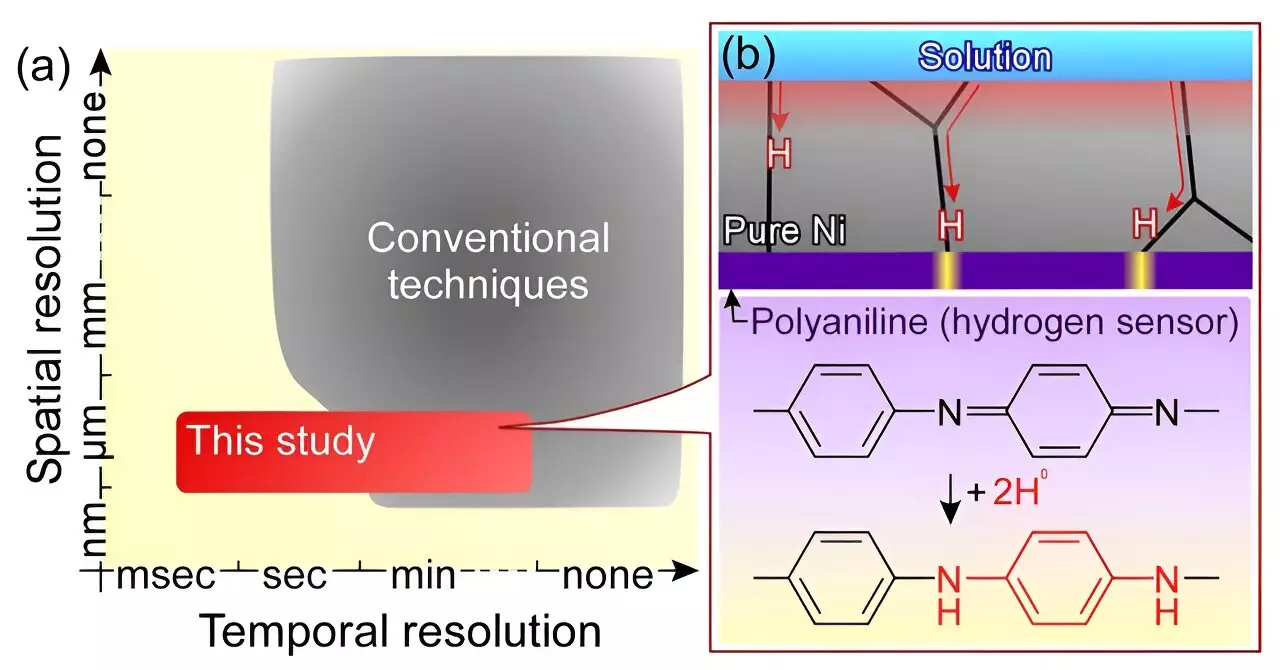Hydrogen, known as a carbon dioxide free energy source, has the potential to revolutionize clean energy. However, the advancement of hydrogen-related applications is hindered by the lack of understanding of how hydrogen behaves in alloys. Detecting the atomic state of hydrogen has been a challenge due to its unique characteristics. In this article, we will explore a new breakthrough in visualizing the atomic state of hydrogen through a simple and inexpensive technique.
The Limitations of Current Technology
Current technology falls short in terms of accurately detecting atomic state hydrogen. The use of X-rays or lasers to visualize hydrogen atoms is challenging due to their small size. Analytical and visualization techniques that can incorporate high spatial and time resolutions simultaneously are needed to overcome this hurdle.
A New Visualization Technique
A group of researchers, led by Hiroshi Kakinuma from Tohoku University, has developed a new visualization technique using an optical microscope and a polyaniline layer. By observing the color change of the polyaniline layer when reacting with atomic state hydrogen, the flow of hydrogen atoms can be analyzed. This technique allows for real-time observation of hydrogen behavior with unprecedented high spatial and time resolutions.
Success in Filming Hydrogen Atoms
Through this new method, the researchers successfully filmed the flow of hydrogen atoms in pure nickel (Ni). The color of the polyaniline layer changed from purple to white when reacting with hydrogen atoms in the metal. The visualization revealed that hydrogen atoms preferentially diffused through grain boundaries in disordered Ni atoms. Additionally, the group found that hydrogen diffusion was influenced by the geometrical structure of the grain boundaries.
The new visualization technique is not limited to pure nickel. It can be applied to other metals and alloys, such as steels and aluminum alloys. This breakthrough paves the way for a better understanding of the microscopic hydrogen-material interactions, which can be further investigated through simulations.
Understanding the behavior of hydrogen at the atomic scale in alloys is essential for efficient alloy design. This knowledge will accelerate the development of highly functional materials and bring us closer to a hydrogen energy-based society. By overcoming the technical barriers in visualizing atomic state hydrogen, this breakthrough opens up possibilities for advancements in hydrogen-related applications.
The development of a new visualization technique using an optical microscope and polyaniline layer has allowed researchers to film the flow of hydrogen atoms in pure nickel. This breakthrough has broader implications for the understanding of hydrogen behavior in alloys and opens up possibilities for alloy design and the development of highly functional materials. The visualization technique can be applied to other metals and alloys, furthering our knowledge of the microscopic hydrogen-material interactions. With this breakthrough, we move one step closer to a hydrogen energy-based society.


Leave a Reply